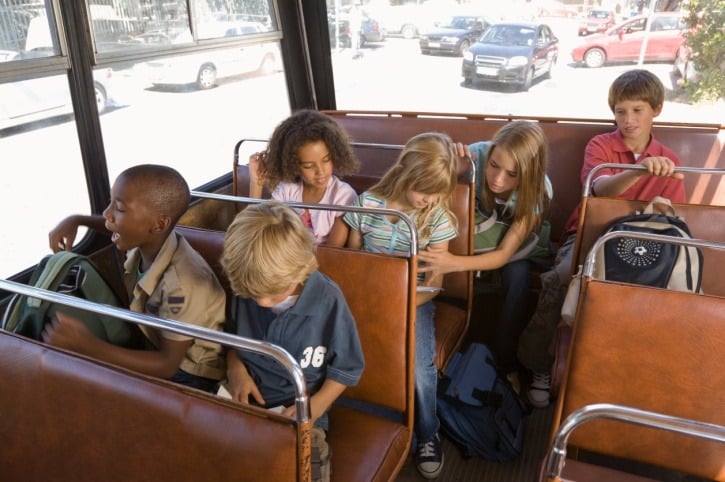In many districts around the country, students endure long commutes to and from school – sometimes as much as 90 minutes! Educators are beginning to consider equipping school buses with wireless Internet connections to help extend the classroom beyond the school and allow students to take advantage of these long commute times. With Wi-Fi enabled school buses, students will be able to complete school assignments and get a jump on the evening’s homework.
At ISTE 2015, the Kajeet team spoke with many technology leaders looking for this exact solution in their district. Districts such as Coachella Valley Unified School District have discovered equipping school buses with Internet connectivity allows students to get online while on or near a school bus. Enabling Internet access for students during this key time frame can give disadvantaged students the extra time they need to keep up with their schoolwork.
Part of the Solution
With one-third of students lacking home Internet and more schools launching 1-to-1 and BYOD programs, keeping kids connected has become a priority among technology and curriculum directors. Outfitting buses with Wi-Fi may make the difference for some, and it is an affordable solution for administrators looking to connect many students at one time.
Though Internet-enabled school buses won’t be the sole solution to connecting economically disadvantaged students (since a 10- or 20-minute ride on a noisy bus likely won’t yield the same results as a student working quietly at home), it can be part of a broader solution that also includes offering home Internet access to at-risk students.
Wi-Fi on buses will allow student athletes to complete homework while traveling to and from long-distance away games, providing students an opportunity to get the most out of their time on school buses. In a few instances, we also heard principals and teachers mention having Wi-Fi on buses en route to field trips would also allow students to take advantage of travel time and extend the learning beyond the classroom.
Buses as Mobile Hotspots
Educators seem to be buzzing about how the district can park their buses after school hours and serve as mobile hotspots for parts of town where many students may not have access once the buses have completed their routes for the day.
If your district is considering Internet connectivity for school buses, here are a few things to keep in mind before getting started:
1) Look at Coverage in Your Area.
Wi-Fi hotspots and routers need network coverage. Just like cell coverage can drop in certain places while you’re traveling, so can Wi-Fi access (which is simply using the cell towers to connect to the Internet). Test the coverage in your area and expect there may be hiccups in some places. Make sure you communicate that to students, parents and school bus drivers so they can expect it. Choose a provider that works well within your district’s borders.
2) Make Sure You Can Support Many Students at Once.
One or two MiFi devices may not support a bus full of students if everyone is online at the same time. Districts need to find the right piece of hardware to support up to 40 students at any given time.
3) Consider the Filters.
We know you are serious about keeping kids safe online with your in-school filters, but keep in mind that the school bus is still school property. It is important to ensure that students are not using school bus Wi-Fi to watch movies, stream music or visit school-restricted websites.
4) Choose Your Routes.
Every district has areas where there are a higher percentage of students lacking Internet at home. A school bus outfitted with Wi-Fi can provide that community with the connectivity they may not be able to afford at home. Districts can balance school bus transit times with those areas of town and outfit the buses that will have the most impact on the community.
5) Get Community Support.
Connectivity on the bus will likely impact many people throughout your district – not just the students. Before deploying a solution, ensure that everyone from your transportation team, including the bus drivers, as well as teachers and parents are aware of the benefit this will provide to students.






.png)
